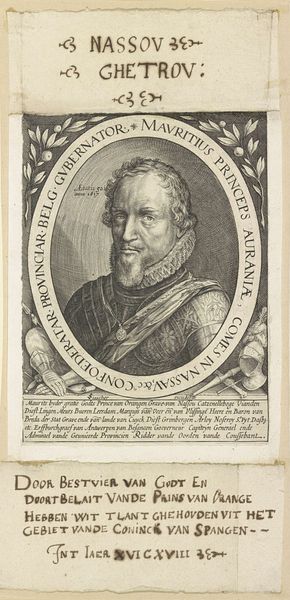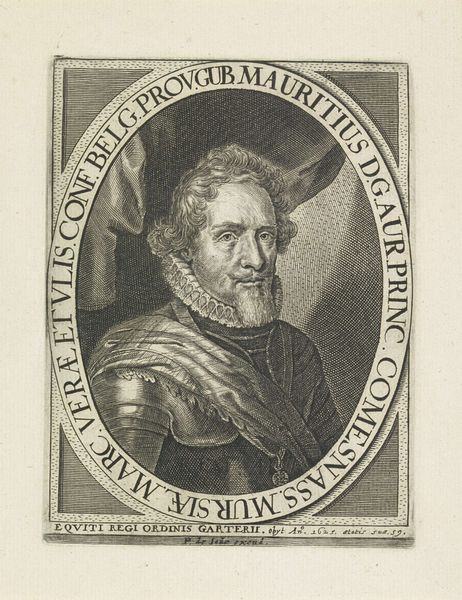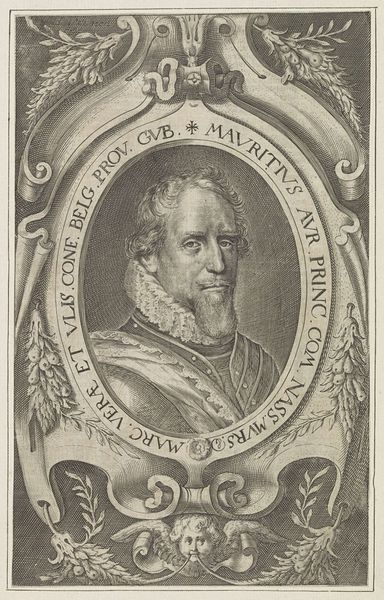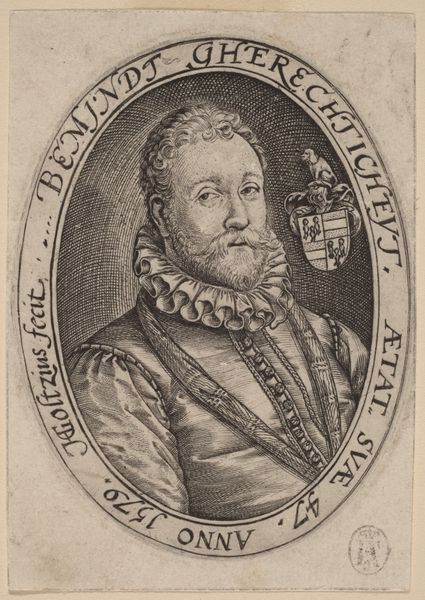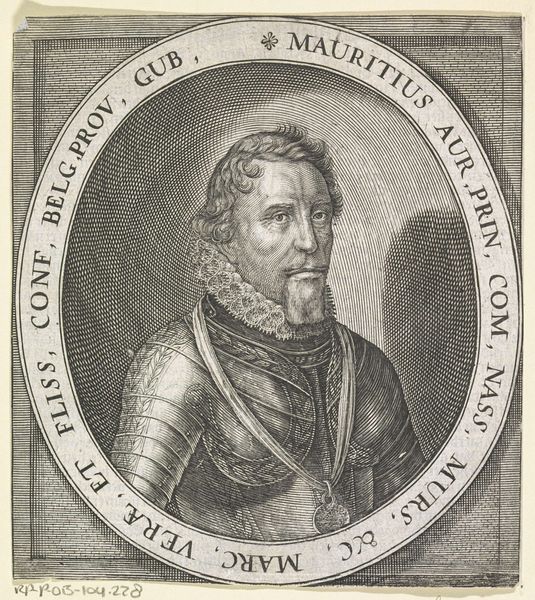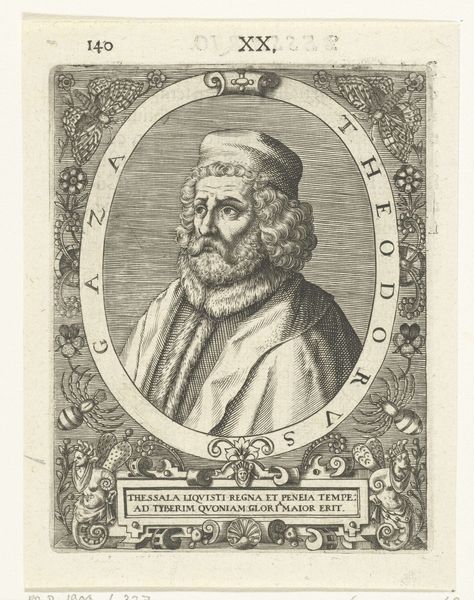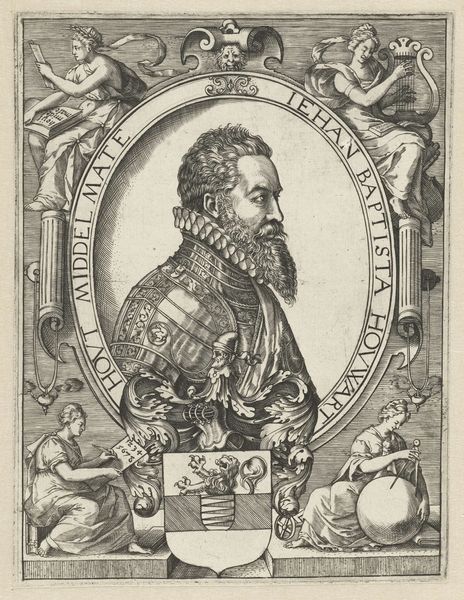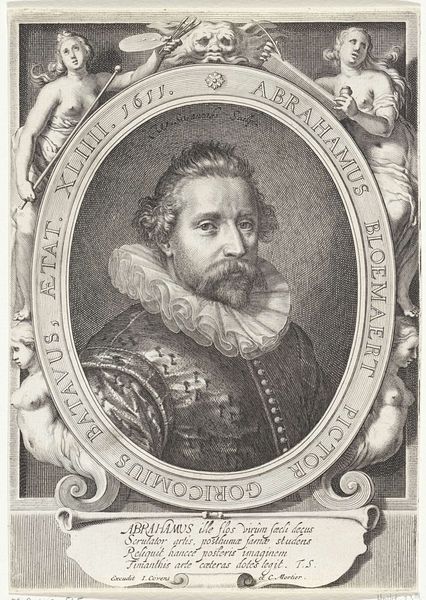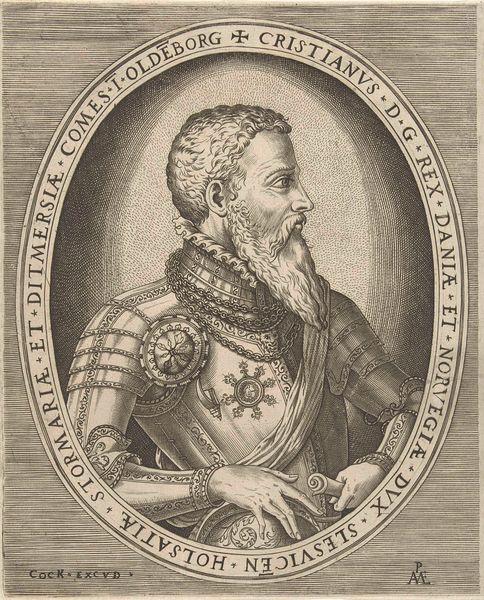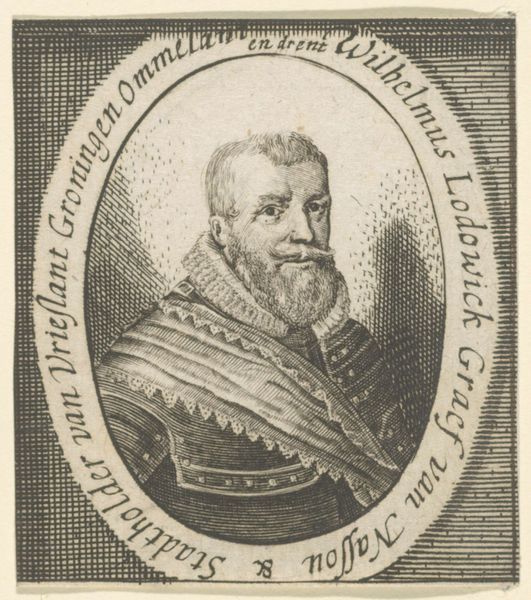
print, metal, engraving
#
portrait
#
aged paper
#
baroque
# print
#
metal
#
old engraving style
#
highly detailed
#
geometric
#
history-painting
#
golden font
#
engraving
#
columned text
Dimensions: height 175 mm, width 132 mm
Copyright: Rijks Museum: Open Domain
This engraving of Maurits, Prince of Orange, at the age of 50, was created by an anonymous artist around 1617. It reflects the specific political and social climate of the Dutch Republic during the early 17th century. Maurits was a key figure in the Dutch Revolt against Spanish rule. He’s depicted here not just as an individual, but as a symbol of the burgeoning Dutch state. Note the inscriptions around the portrait that lay out his various titles and lands, which underscores his power and authority. The armor and the surrounding olive branches further emphasize his dual role as a military leader and a bringer of peace and prosperity. This image, disseminated through print, played a role in constructing and reinforcing Maurits’s public image. To understand this print more fully, one might consult contemporary pamphlets, political treatises, and other visual representations of Maurits and his era. Art doesn’t exist in a vacuum; its meaning is inextricably linked to its social and institutional context.
Comments
No comments
Be the first to comment and join the conversation on the ultimate creative platform.
